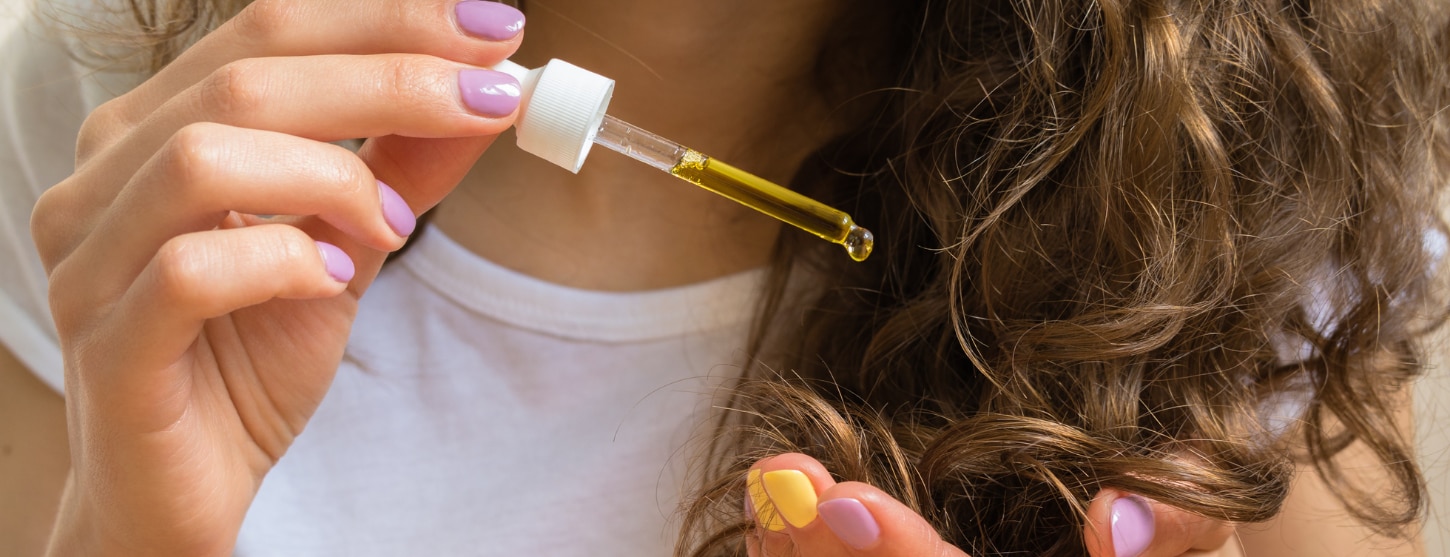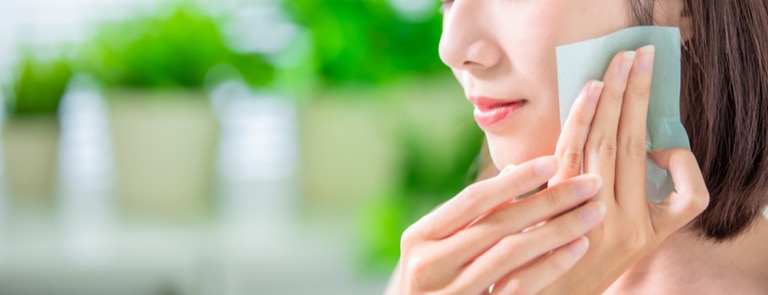15% off £20
Guide to ageing and grey hair

Greying hair? Thinning locks? Dry or brittle tresses? Just like your skin, your hair changes as you age.
We explain why – and how to look after it
You moisturise your skin faithfully every day, and protect it from the sun to help prevent the appearance of ageing – but what about the effects of ageing on your hair?
In fact, your hair goes through two major changes as you get older:1,2
- Greying – this can also make it drier and more brittle
- Thinning – mild to moderate hair loss can make your hair look thinner overall
Here’s the lowdown on why it happens:
Greying hair: Who gets it?
Almost everyone.
It usually begins in your 30s, but some people go grey much younger – it’s determined by your genes; white people tend to go grey earlier than Asian people, for example.3
On average, it’s thought that by the age of 50, half of us will have 50% grey hair.4
Why does hair go grey?
Hair doesn’t actually ‘turn grey’, it simply loses its colour.
This occurs because hair follicles produce a substance called melanin – a pigment that gives hair its colour – but as you get older, your follicles produce less melanin, so the colour slowly fades.5
Typically, greying starts at your temples and then moves back to the top of your scalp.
Can you prevent or slow greying?
No, but managing stress could potentially help some people.
Stress can cause a temporary shedding of hair called telogen effluvium, which disrupts the natural growth cycle and makes hair fall out in higher volumes than usual.
If that happens to you in middle age, your hair is more likely to grow back grey – this then makes it seem as if you’ve suddenly started to go grey.
Some nutrients may help prevent premature greying.
A small 2017 study published in the International Journal of Trichology reported that people who had gone grey prematurely also had low levels of vitamin B12, folic acid and biotin, or vitamin B7.6
You can find a full-range of B vitamins in a vitamin-B complex, or by eating a varied diet with plenty of wholegrain foods and green, leafy vegetables.
And avoid smoking too, as this can also cause premature greying.7
Thinning hair: who gets it?
Thinning hair affects most of us with age but men more dramatically, and from a younger age.
Just as with greying hair, the age and rate of thinning is linked to your genes.8
By 50, around half of men have some hair loss.9
In women, significant thinning doesn’t usually start until your fifties or sixties.10
Why does hair get thinner?
A combination of age, hormones and genes mean your hair follicles begin produce finer, shorter hairs. However, they can then shrink and stop hair production altogether.11,12
Can you prevent or slow thinning?
There are certain medications that can help if you’re concerned – speak to your doctor. But nothing will prevent normal age-related thinning.13
Handpicked content: 6 of the best hair growth products & tips
Which vitamins are good for your hair?
Which vitamins are good for your hair?
Beyond choosing the right products for your hair and eating a nutrient-packed diet, you might want to think about treating it with a few extra vitamins and minerals.
Read more


How to look after ageing hair
You may not be able to stop your crowning glory going grey or thinning. But you can keep it as healthy as possible. Here’s how:
Eat a healthy, balanced diet – it’s important to tuck into a wide variety of nutrients for good health, but a 2018 Chilean study found the following nutrients have been linked to hair loss in cases of deficiency:14
- Iron – found in nuts, dried fruit, meat and dark green leafy veg
- Zinc – in cheese, bread, shellfish and meat
- Vitamin A – in cheese, eggs, oily fish and milk
- Vitamin D – our bodies mainly get vitamin D from sunlight, but you can also get some from oily fish and egg yolks
-
The role of copper
We don’t mean copper-coloured hair, but getting more copper in your diet to help keep greys at bay.
A study published in the journal Biological Trace Element Research in 2012 revealed that copper concentration in the blood was significantly lower in those with prematurely greying hair than in those with their natural colour.
The study authors concluded that ‘a low serum [blood] copper concentration may play a role in premature greying of hairs in our society.’
Boost your copper levels by taking a copper supplement or eating copper-rich foods including black beans, sunflower seeds, cashew nuts and oysters.
-
Up your vitamin D and calcium
Another small study in 2013 found that vitamin D3 and calcium may also play a role in premature greying.
Indian researchers discovered that calcium and vitamin D3 levels were ‘significantly lower’ in those with premature greys, and called for more studies to investigate the specific role D3 may have to play.
We need vitamin D to be able to absorb calcium properly, so a lack of one nutrient could lead to a deficiency in another.
Our bodies make vitamin D from sunshine, but the sun isn’t strong enough during the autumn and winter months to get our quota.
Try taking a daily vitamin D3 supplement or up your intake of vitamin-D rich foods such as oily fish and eggs. Good sources of calcium include dairy products, sardines and tofu.
Handpicked content: The best sources of Vitamin D
-
Protect your head from the sun
Grey hair is more vulnerable to damage from UV rays, according to a 2018 review by the USA’s Mayo Clinic, while thinning hair offers less sun protection for your scalp.15
Wear a sun hat and choose hair products with UV protection.
Handpicked content: 9 ways to protect your hair & scalp from the sun
-
Use conditioner
Conditioner can strengthen the cuticles lining the outside of the hair follicle, and protect them not just from the sun, but wind and humidity too, which can also damage greying hair.16
-
Try silica
Found in many hair and skin supplements, a 2005 study in Archives of Dermatological Research found this nutrient may help keep hair glossy and reduce brittleness.17
Handpicked content: What is silica?
Last updated: 12 August 2021
- https://medlineplus.gov/ency/article/004005.htm
- https://www.ncbi.nlm.nih.gov/pmc/articles/PMC2695167/
- https://medlineplus.gov/ency/article/004005.htm
- https://www.ncbi.nlm.nih.gov/pmc/articles/PMC6029974/
- https://medlineplus.gov/ency/article/004005.htm
- https://www.ncbi.nlm.nih.gov/pmc/articles/PMC5514791/
- https://www.health.harvard.edu/blog/hair-turn-gray-2017091812226
- https://medlineplus.gov/ency/article/004005.htm
- https://www.bad.org.uk/for-the-public/patient-information-leaflets/hair-loss---male-pattern/
- https://www.bad.org.uk/for-the-public/patient-information-leaflets/hair-loss---male-pattern/
- https://www.bad.org.uk/for-the-public/patient-information-leaflets/hair-loss---male-pattern/
- https://www.bad.org.uk/for-the-public/patient-information-leaflets/hair-loss---male-pattern/
- https://www.mayoclinic.org/diseases-conditions/hair-loss/symptoms-causes/syc-20372926
- https://www.oderm
- https://www.ijtrichology.com/article.asp
- https://www.ncbi.nlm.nih.gov/pmc/articles/PMC5419032/
- https://www.ncbi.nlm.nih.gov/pubmed/16205932













